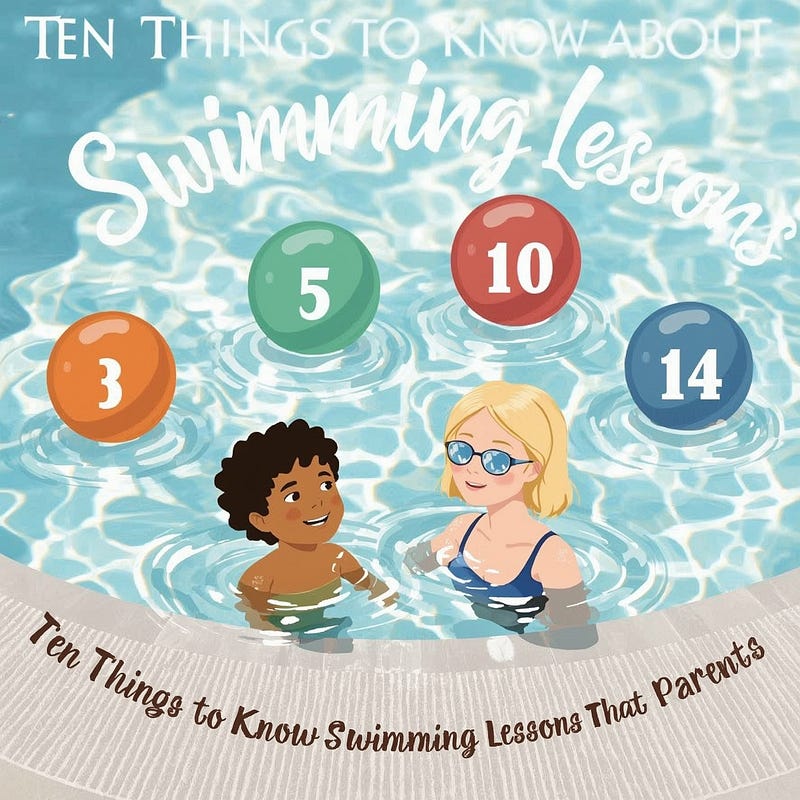Ten things to know about swimming lessons that parents should know

1. Children do not develop the cognitive skills required to learn to swim until they are approximately 4 years old.
They should be able to listen, follow instructions, and remember what they have learnt by the time they are 4 years old; however, some children may be ready earlier
2. Nevertheless, swimming lessons for children aged 1 to 4 can be beneficial.
Younger children can learn some skills that can be helpful if they fall into the water, such as returning to the pool’s edge, in addition to being ready earlier.
3. The beach or pool where kids learn needs to be secure.
Although it may seem apparent, you must verify safety for yourself; you cannot make assumptions about it. The space ought to be kept tidy and clean. Since teachers cannot constantly monitor every student, there should be lifeguards who are not teaching. places of deeper water should be marked off with something, and kids should be kept out of those farther places. Safety regulations should be displayed, and first aid and life-saving supplies should be readily available.
4. Training for the teachers is necessary.
Once more, this may seem apparent, but it’s not always the case. Parents should enquire about the training and evaluation processes used by teachers as well as if they follow policies set forth by organisations like the YMCA or the Red Cross.
5. There should be a suitable student-teacher ratio.
It should ideally be as low as feasible, particularly for young children and novice swimmers. In certain situations, the instructor should be able to observe the entire class and have every child within arm’s reach. The group size can increase as the kids get better, but it should never exceed what the teacher can safely watch over.
6. A curriculum and a progression should be in place, and kids should be grouped according to their aptitude.
Generally speaking, swim lessons move from acclimating to the water to mastering various strokes. There should be a clear plan for advancing children’s skills and a clear method for evaluating them.
7. At least a portion should be available for parents to watch.
It should be possible for you to observe what is happening in the classroom. Parents should be able to watch at least the start and finish of a class, but it’s not always beneficial or useful to be present all the time because it can distract kids. A lot of pools have a deck or observation glass.
8. Care should be taken when using flotation devices.
The use of “bubbles” or other flotation aids to teach kids to swim is a topic of much discussion. If they are utilised, the lessons should be planned to progressively reduce any reliance on them. They can be very beneficial in keeping kids safe in the beginning and in teaching them good placement and stroke mechanics instead of swimming frantically to remain afloat.
9. Fear of the water is not an excuse for skipping swimming classes or for giving up.
Being afraid of the water is normal and typical, though some kids are more terrified than others. Giving up isn’t a smart option either, but you also don’t want to make a youngster do something they’re afraid of. With lots of encouragement, start out more slowly. The swim instructor must be eager to assist.
10. A child can still drown even if they can swim.
Youngsters may become weary, injured, confined, snagged, or confused. Problems might arise even for proficient swimmers. Even though swimming lessons can save lives, kids should always be watched over near water and should wear life jackets when boating and participating in other water sports.

0 Comments